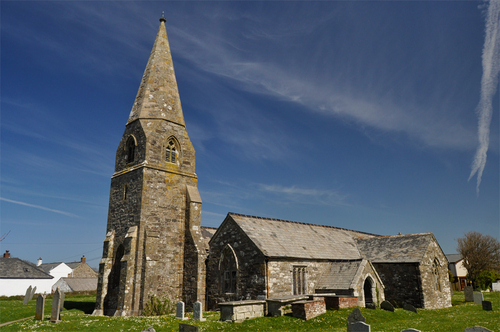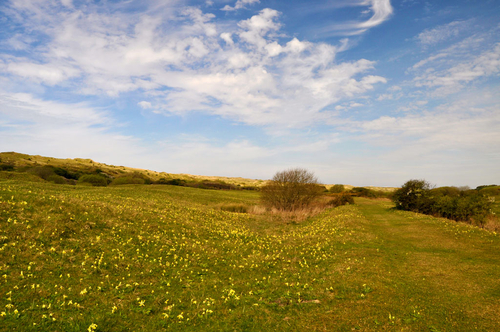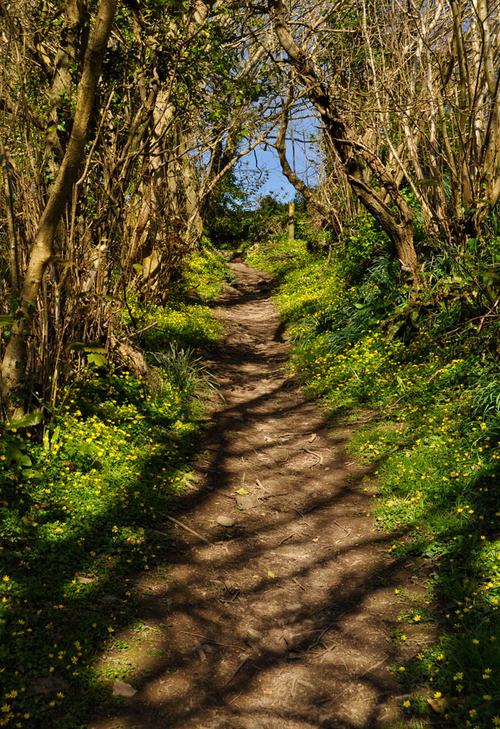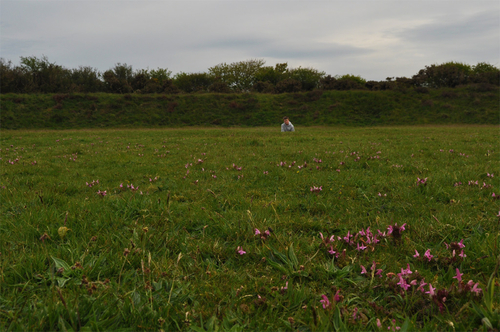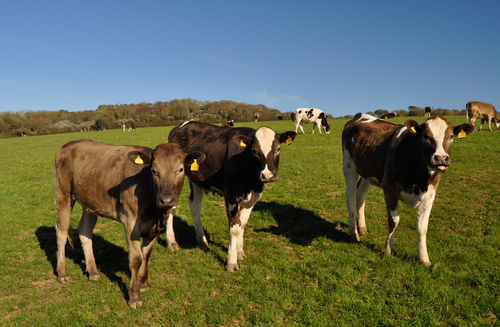This is a circular walk near Perranporth around the valleys crossed by the Great Perran Lode. There are some reasonably steep climbs so we've graded it at moderate. Combined with the length it can be tiring but fortunately there is pub just before the end so you can have a bit of refreshment before the final climb.
The walk starts at the church - dedicated to St Cubert, who was thought to be a Welsh Missionary and companion of St Carantoc (who gave his name to Crantock). The churchyard is thought to date from Saxon times and the present church dates from the 13th Century, with a rebuild in the 15th century and a restoration in the 19th century after lightning blasted the spire and tower.
The walk then descends into the valley to reach Penhale Sands which are carpeted in cowslips in late Spring - probably the most I’ve ever seen in one place.
The route then follows small lanes, tracks and footpaths across the fields towards Rose. During April and May, the paths are lined with celandines which give way to campion and foxgloves in the early summer. “Ros” is the Cornish word for “moor” so which is why there are so many places with “rose” or “ros” in the name.
The walk continues along footpath and tracks to reach St Piran's Round - a circular bank which is thought to have originally been an Iron Age fortified settlement. During mediaeval times the circular ramparts were converted into an amphitheatre in which "miracle plays" were performed, based on adventures of the Celtic saints. A sunken area known as "The Devil's Spoon" allowed the devil to emerge from the ground during plays (for which we have approximated a teenager in the photo).
From here, the route turns back into the valley, which is crossed by the Perran Lode - a particularly large vein of iron ore which runs all the way to the cliffs at Perran Beach, and numerous smaller lodes of lead and silver ore. There were mines in the valley for many centuries and hence The Miner’s Arms on the lane to Rejerrah. Lumps of pure silver were raised from some of the mines as well as high concentration silver ore.
The route follows footpaths and lanes across the valley to reach the Inn known as the Smuggler's Den. The Inn was built in the 17th Century, originally as an L-shaped farmhouse, and towards the end of this period an additional room was added to create the U-shape that you see today. High levels of duty were placed on tea and alcohol in the 17th and 18th centuries in order to fund the various wars, and large amounts of both were landed illegally on the cornish coast. Even the customs officers in Newquay were reported in one source as having a very liberal attitude. Consequently a substantial proportion of the spirits served in Cornish Inns were smuggled. However, ale and cider were generally not smuggled as their value was too low for their bulk.
A final footpath leads back to Cubert from the inn, emerging next to the church.
The walk is available as a guided walk app for Android and also available in the iWalk app for iPhone.
There are also a few other circular walks in the Perranporth area on the iwalknorthcornwall website.
